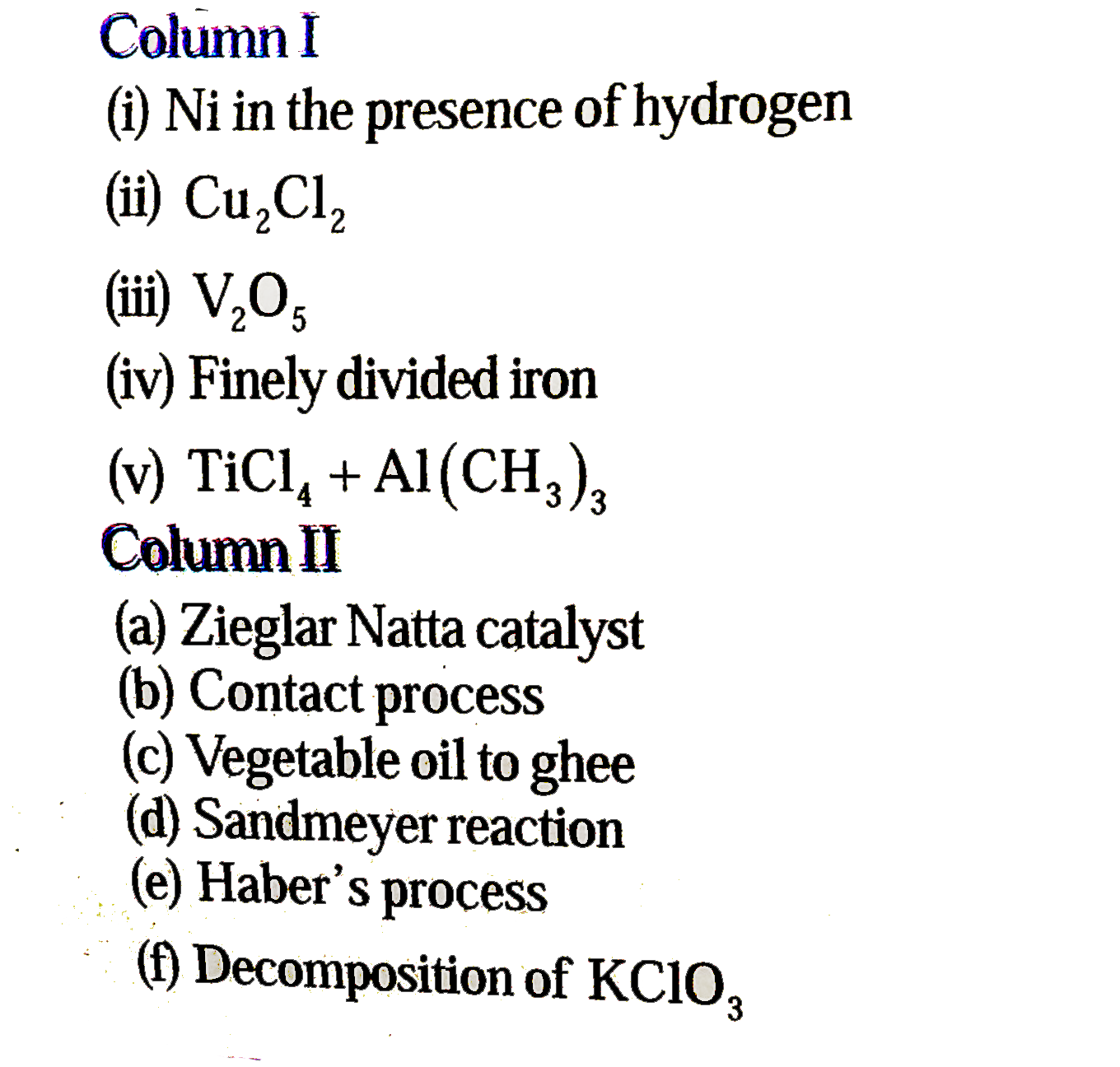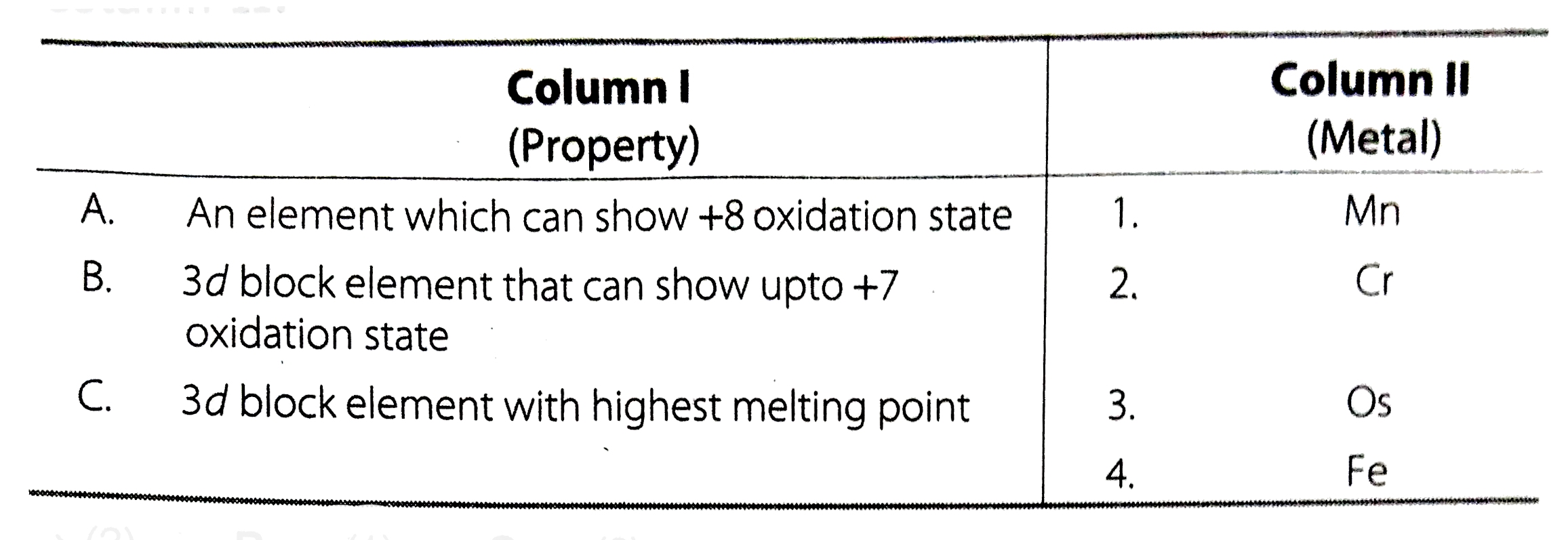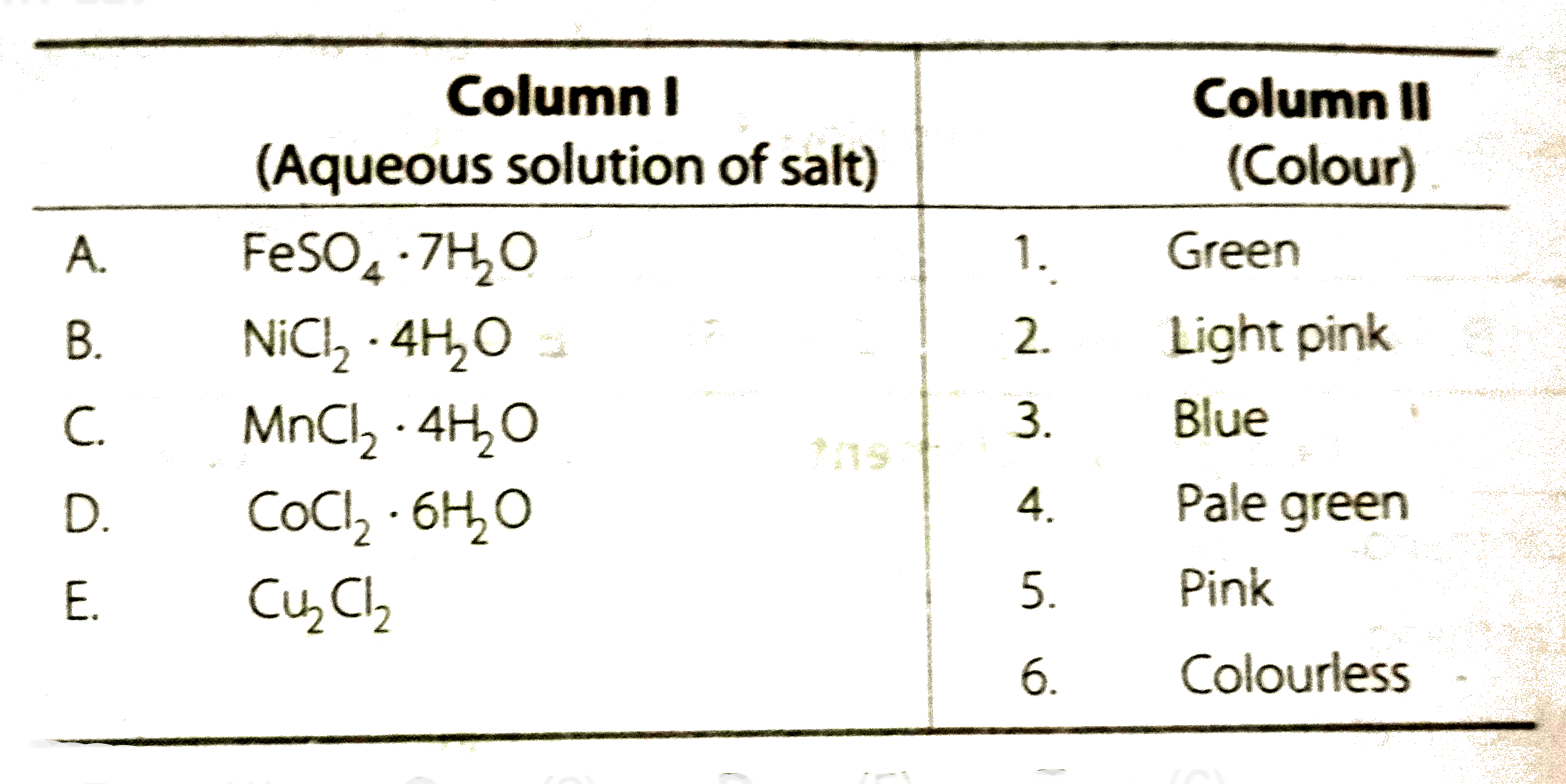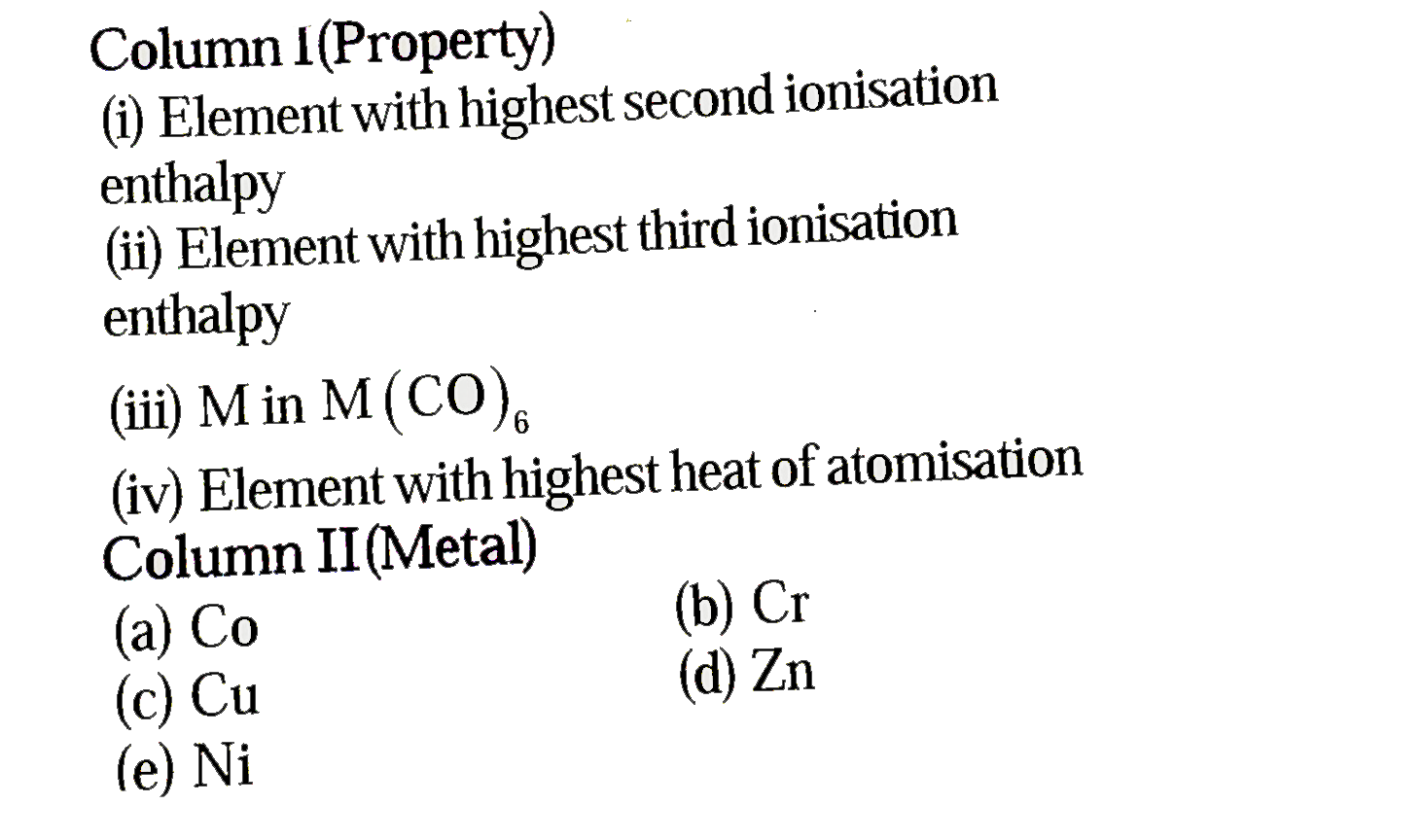Complete Solutions to Level-IV of chapter D BLOCK & TRANSITION ELEMENTS of Class 12 book with complete answers and questions
| Class 12 | CHEMISTRY |
| Chapter | D BLOCK & TRANSITION ELEMENTS |
| NARAYANA | Level-IV |
| Number Of Questions | 29 |
| Academic Year | 2023-24 |
Electronic confriguration of a transition element X in +3 oxidation states is `[Ar]3d^(5)`.
What is its atomic number?01:10View SolutionThe electronic configurationo of Cu(II) is `3d^(9)` whereas that of Cu(I) is `3d^(10)`. Which of the following is correct ?
02:56View SolutionWhich of the following reactions are disproportionation reactions?
`(A)" " Cu^(+)rarrCu^(2+)+Cu`
`(B)" "3 MnO_(4)^(2-)+4H^(+)rarr2MnO_(4)^(-)+MnO_(2)+2H_(2)O`
`(C )" "2KMnO_(4)rarrK_(2)MnO_(4)+MnO_(2)+O_(2)`
`(D)" "2MnO_(4)^(-)+3Mn^(2+)+2H_(2)O rarr5MnO_(2)+4H^(+)`09:27View SolutionWhich of the following statements is not correct?
07:54View SolutionThe highest Manganese fluoride is
01:17View SolutionWhich one of the following is lest stable?
01:49View SolutionFerrates `[FeO_(4)]^(2-)` are formed in alkaline media but they readily decomposes to
02:03View SolutionWhy is the value for `(Mn^(3+))/(Mn^(2+))` couple much more positive than that for `(Cr^(3+))/(Cr^(2+))` or `(Fe^(3+))/(Fe^(2+))`? Explain
02:38View SolutionWhich one of the following catalyses the reaction between iodide and persulphate ions `(2I^(-) + S_(2)O_(8)^(2-) rarr I_(2) + 2SO_(4)^(2-))`
02:17View SolutionWhich one of the following does not exist?
02:58View SolutionFor `Mn^(3+)//Mn^(2+)` system, the `E^(0)` values for some metals are as follows:
`Cr^(3+)//Cr^(2+)(-0.4V) , Mn^(3+)//Mn^(2+) (+1.5V)`,
`Fe^(3+)//Fe^(2+)(+0.8V)`. Then the relative stabilities of `Fe^(3+), Cr^(3+)` and `Mn^(3+)` is :04:06View Solutionwhich metal in the first series of transition metals exhibits +1 oxidation state most frequently and why?
01:39View SolutionMatch the catalysts given in column I with the processesn given in column II
 06:09View Solution
06:09View SolutionMatch the properties given in Column I with the metals given in Column II
 01:54View Solution
01:54View SolutionMatch the statements given in Column I with the oxidation states given in Column II.
 02:25View Solution
02:25View SolutionMatch the solutions given in Column I and the colours given in Column II.
 02:19View Solution
02:19View SolutionMetch the properties given in column I with the metals given in column II
 View Solution
View SolutionTransition element which exhibits typical metal (complex) structure
View SolutionFerrotes are formed in alkaline medium but they readily decopose to `Fe_(2)O_(3)` and `O_(2)`. Then oxidation state of iron in ferrates is
04:04View SolutionWhich of the following ions show higher spin only magnetic moment value?
04:57View SolutionWhich of the following will not act as oxidising agents?
02:16View SolutionWhich one of the following statement(s) is/are correct?
View SolutionWhich one of the following does not exhibit variable oxidation states?
02:41View SolutionWhich one of the following does not exist?
06:44View SolutionFor which one of the following, observed magnetic moment is more than calculated magnetic moment (The experimental data are mainly for hydrated ions in solution)?
View SolutionFor which one of the following, observed magnetic moment is less than calculated magnetic moment(The experimental data are mainly for hydrated ions in solution)?
View SolutionWhich one of the following is correct?
View Solution`MnO_(4)^(2-) + H^(+) rarr X + Y + Z` (unbalanced), then identify `X,Y`and Z?
02:02View SolutionWhich one of the following is correct?
05:53View Solution
Level-IV questions and complete solutions for chapter D BLOCK & TRANSITION ELEMENTS of NARAYANA CHEMISTRY (HINGLISH) of Class 12
